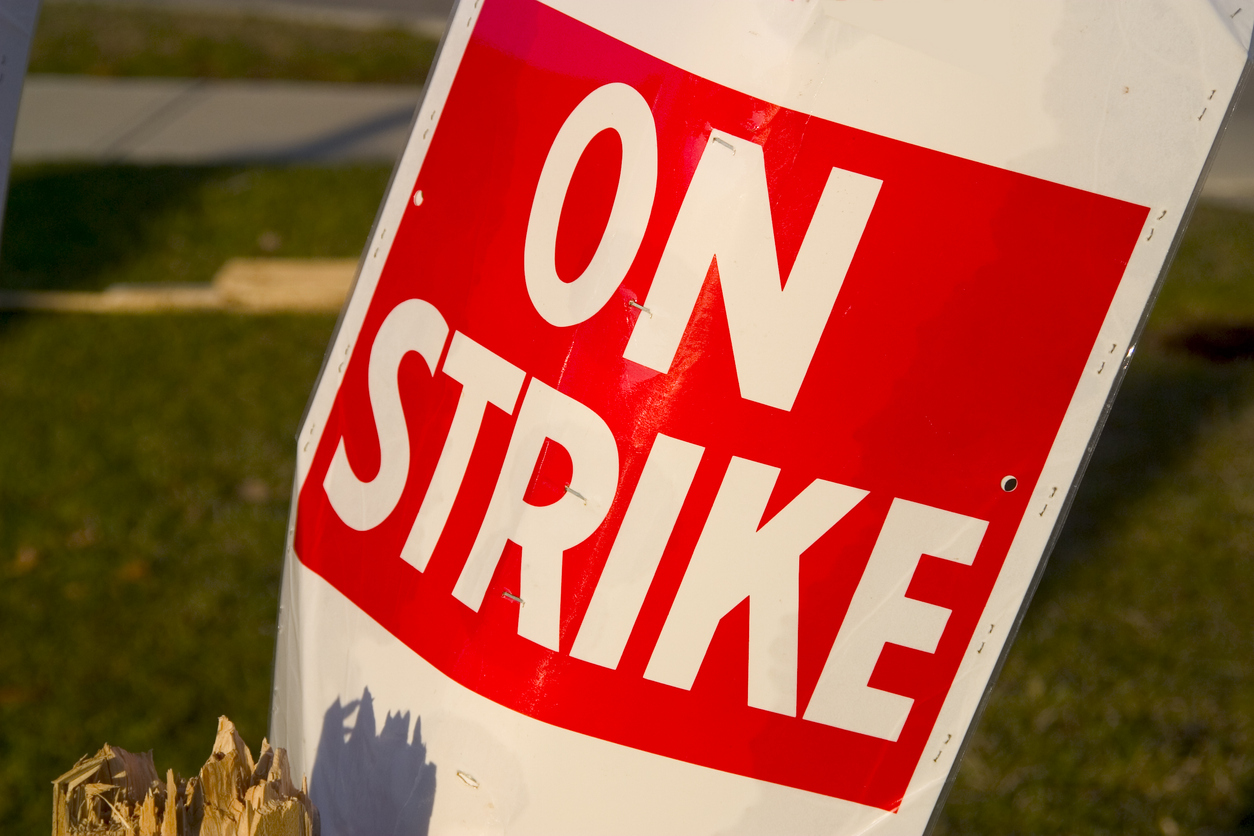Unions ask federal regulators to protect worker mental health, auto manufacturers lay off employees amid strike
Plus, communicating amid distractions in the post-pandemic workplace.

Greetings comms pros! Let’s take a look at some news stories from the last week and see what we can learn from them.
1 . Unions co-sign letter seeking federal help for mental health support
A letter to OSHA and the Assistant Secretary of Labor from a consortium of labor unions across several industries sought to gain protections for their mental health. The letter, signed by Dr. David Michaels, former assistant secretary of labor for OSHA, stated that mental health problems in the workforce are on the rise and action needs to be taken:
Mental health issues are prevalent among American workers. Seventy-six percent of workers reported at least one symptom of a mental health condition. Mental health disorders like depression, anxiety, and post-traumatic stress disorder in the workplace can negatively affect productivity, engagement in work, communication with coworkers, and daily functioning. Workplace mental health presents equity issues as well.
In one study, Black and Latinx respondents experience more symptoms than their white counterparts, and are more likely to have left a previous job for mental health reasons. Women are more likely to face certain types of work-related mental health issues. And people with disabilities are several times more likely to experience mental distress than those without.
It’s no secret that many workers experienced symptoms of burnout in the wake of the pandemic. Organized labor putting the issue at the forefront by petitioning the federal government for more support should also be understood as a sign that companies in the industries represented aren’t perceived to be doing enough.
Regardless of the industry, comms pros should attune ourselves to the signs of burnout in employees and work to help stem it. That can come in the form of EAPs, mental health days, or countless other resources. But once those resources are in place, you should be sure that you’re telling the entire organization they exist and should be utilized.
2. GM, Stellantis cut jobs during UAW strike
General Motors and Stellantis are laying off about 2,000 workers while the UAW strike wears on — and are blaming the decision on the strike.
GM said in a statement Wednesday that it has halted production at its assembly plant in Fairfax, Kansas, because of a “shortage of critical stampings” that would have been supplied by its factory in Wentzville, Missouri, where workers went on strike last week. About 2,000 workers are affected.
Earlier Wednesday, Stellantis said it is laying off about 370 employees at three parts factories in Ohio and Indiana immediately due to “storage constraints,” also related to the strike. The plants make parts for Jeep vehicles built at the automaker’s Toledo Assembly Complex, where workers are also on strike.
“We have said repeatedly that nobody wins in a strike,” GM said in a statement. “What happened to our Fairfax team members is a clear and immediate demonstration of that fact. We will continue to bargain in good faith with the union to reach an agreement as quickly as possible.”
These layoffs underscore why the UAW strike, and the union’s focus on a lack of flexibility including four-day workweeks, emphasize just how little flexibility the automakers grant to their workforces.
Even the words used in the message avoid any acknowledgment of a relationship or accountability— specifically “what happened to our Fairfax team members”. What happened to them was in fact caused by automakers deciding to cut their jobs.
This is a reminder that, in times of upheaval, it’s important that messaging is vetted not only by legal but by senior comms leaders, who balance risk with tone and leave room for unintended interpretation.
3. Experts find the post-pandemic workplace more distracting than ever before
Do you find your post-pandemic workplace to be more distracting than you did before COVID? If so, you aren’t alone.
According to The Globe and Mail:
Not only has the workplace changed since the pandemic began in early 2020, but experts suggest so have our brains. As a result, many workers are feeling uneasy in office environments that may have once felt like a second home. While some of that discomfort may be temporary, experts suggest we may never feel the same about shared workspaces again.
“It’s possible that our threshold for being distracted may have changed, because the pandemic lasted several years, and we became accustomed to an environment that is quieter, and that we have more control over,” says Veronica Galván, an associate professor of psychological sciences at the University of San Diego. “It can be jarring to go back to a situation that is quite different.”
There’s been a lot of talk recently about return-to-office requirements and how they’ll impact employee culture and productivity. With that issue in mind, it’s important for organizations to recognize that not everyone is going to adjust to a return to a physical workplace in the same way.
That’s why it’s important for you to ensure that your org chart is optimized to have open lines of communication and resources that can prepare managers to help those struggling feel more productive. Certain employees with different modalities of learning may benefit from reasonable accommodations around how they are expected to interact or engage. Ultimately, workplaces should serve as spaces for people to get their best work done — and if something is distracting to make that happen, your managers should be equipped with the resources and channels to step in, diagnose the issue, and mitigate it.
4. How about some good news?
- Scientists invented solar panels that can work in any weather, including snow
- Archaeologists found over 100 ancient cave paintings in a Spanish cave
- NASA revealed new mosaic images of the lunar south pole
- Ragan Training is great for communications pros to find inspiration and resources.
- You should be rewarded for your work. Find out how to earn an award here!
Have a great weekend comms all-stars!
Sean Devlin is an editor at Ragan Communications. In his spare time he enjoys Philly sports, a good pint and ’90s trivia night.







